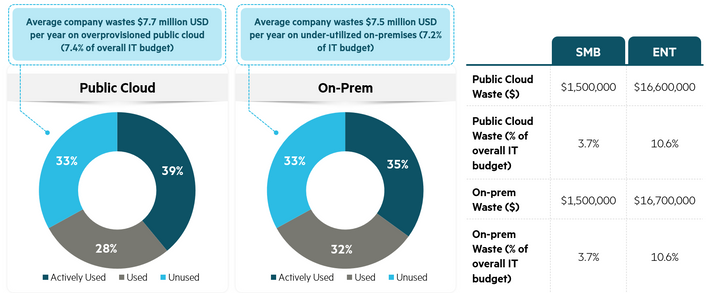- Community Home
- >
- Services
- >
- The Cloud Experience Everywhere
- >
- Are you overprovisioning through cloud (public, pr...
Categories
Company
Local Language
Forums
Discussions
Forums
- Data Protection and Retention
- Entry Storage Systems
- Legacy
- Midrange and Enterprise Storage
- Storage Networking
- HPE Nimble Storage
Discussions
Discussions
Discussions
Discussions
Forums
Discussions
Discussion Boards
Discussion Boards
Discussion Boards
Discussion Boards
- BladeSystem Infrastructure and Application Solutions
- Appliance Servers
- Alpha Servers
- BackOffice Products
- Internet Products
- HPE 9000 and HPE e3000 Servers
- Networking
- Netservers
- Secure OS Software for Linux
- Server Management (Insight Manager 7)
- Windows Server 2003
- Operating System - Tru64 Unix
- ProLiant Deployment and Provisioning
- Linux-Based Community / Regional
- Microsoft System Center Integration
Discussion Boards
Discussion Boards
Discussion Boards
Discussion Boards
Discussion Boards
Discussion Boards
Discussion Boards
Discussion Boards
Discussion Boards
Discussion Boards
Discussion Boards
Discussion Boards
Discussion Boards
Discussion Boards
Discussion Boards
Discussion Boards
Discussion Boards
Discussion Boards
Discussion Boards
Community
Resources
Forums
Blogs
- Subscribe to RSS Feed
- Mark as New
- Mark as Read
- Bookmark
- Receive email notifications
- Printer Friendly Page
- Report Inappropriate Content
Are you overprovisioning through cloud (public, private & hybrid)? Fix it with HPE GreenLake
A new HPE report reveals the hidden costs of traditional cloud strategies and significant opportunities for savings.
By Christel Hollender-Koenig, HPE Industry & Workload Marketing

In November 2020, Hewlett Packard Enterprise commissioned a primary-research cloud perceptions study across the globe, covering 5,000 respondents – IT and business decision-makers – within enterprises as well as small and midsized businesses: Self-Evaluate Your Cloud Migration to Maximize Your Investment. The results showed that companies are wasting budget through over-provisioning cloud and underutilizing on-prem infrastructure. Stakeholders indicate that they “waste,” on average, around 15% of their IT budgets on misaligned infrastructure, as you can see in the figure below.
Independently of the location of the infrastructure, on average 33% of companies’ available capacity stays unused due to overprovisioning in the cloud or underutilization on-prem.
An eye-opening data point is that only 39% of IT in the public cloud, and 35% of on-prem infrastructure, is used in a typical day. This translates into huge IT waste and an average yearly overspend of $15M. It’s interesting also that the overall pattern is very similar around the globe, whether you’re looking at North America, Western Europe, APAC, India or Japan.
Why do IT resources stay unused?
With a desire for more insight, HPE conducted a phase 2 study targeting an additional 2,000 respondents in the US, UK, India, Singapore, and Australia. We asked about the usage of compute and storage capacity on a typical day. The results revealed that only 25%-35% of organizations say they are using more than 60% of their capacity.
Companies who are in the public cloud are ranking highest, with 32% achieving a high level of utilization (above 60%) on the storage side, and 35% on the server side.
But why the waste? There might a good reason that everyone can understand: backup and disaster recovery. More than 40% of respondents named this as one of their top 3 rationales for the reservation of extra capacity, for both public cloud and hosted private cloud (see the figures below). But, surprisingly, that leaves around more than 50% who do not mention this as a justification. So, what is their view?
It is remarkable that one of the top 3 rationales for unused capacity, in both infrastructure models, is the difficulty of anticipating the demand for computing and storage. We also notice that public cloud providers often change their pricing, or in general have complex pricing models. At the same time, 21% of public cloud users and 32% of private cloud users say that they lack visibility into their consumption. They just do not know what they utilize.
All of this leads to lack of cost transparency, which makes optimization of IT usage with a view to spending nearly impossible. And, for the public cloud users, the promise of pay-per-use consumption (i.e. using and paying only for resources needed) seems not to be realized in the end.
IT governance and cost optimization: A mature model
A recent Gartner article describes 10 IT Cost Optimization Techniques for Private and Public Sector Organizations. One technique described is adopting a cloud-first policy, where appropriate, in both public and private sector organizations. The article notes that “while many private and public sector organizations choose cloud services for increasing agility, flexibility and scalability, they also experience cost efficiencies over time.” The article also emphasizes the importance of strict cloud governance to realize those cost savings.
Improving IT governance is the key to tackling cost inefficiencies and achieving the most value from cloud. We find various definitions of IT governance. A useful definition from the IT Governance Institute/ISACA is: “... leadership, organizational structures and processes to ensure that the organization’s IT sustains and extends the organization’s strategies and objectives.”1
Depending on the organization’s size, knowledge and available resources, this can be planned and set up in-house, or with external help from specialized next-generation IT advisory services such as HPE Pointnext Advisory & Professional Services . Especially, you may want to consider HPE cloud consulting and related cloud managed services.
You can find some great advice in this resource: Cloud.nxt: Expert Advice to Help You Get the Most out of Your Cloud Transformation. It includes the three key steps: Preparation for Your Cloud Transformation, Making the Move to The Cloud, and Streamlining Cloud Operations. Another important element could be to establish a Cloud Business Office, which serves as “a permanent operational and governing body that directs and guides all aspects of your cloud program, from the first implementation through ongoing operations.”
Building visibility and insights with an as-a-service approach
Overall, companies need to achieve best predictability of IT infrastructure usage and transparency of cost. As a first step, this requires visibility into demand to allow an understanding of needs. This should then lead to good forecasting. Consider management tools that ideally cover cloud and on-prem infrastructure at the same time and allow different views depending on different roles in the company.
Investigating platforms that come with such management tools and visibility makes a lot of sense. HPE GreenLake is pay-per-use, as-a-service platform that comes with HPE GreenLake Central embedded. This is a platform that centralizes operations and insights and helps optimize cost and capacity across a hybrid estate.
The infrastructure as a service approach itself can be a powerful ally in helping you reduce waste and overspend. With HPE GreenLake, you’ll have HPE hardware installed on-premises or in a colocation facility, with capacity right-sized for your business. We meter your usage of the resources, and we charge you based on that. You can easily scale capacity up or down as your business needs change. We design, install and support the solution for you. With this on-prem cloud services approach, you can avoid procurement delays and the need for large upfront investments. And because it’s a true pay-per-use platform, you avoid the overprovisioning that’s common with traditional IT purchasing approaches.
What about for public cloud? HPE can help you there, too. If you’re spending too much in the cloud, it’s likely due to the non-transparent usage information, the sheer volume of usage, and lack of analytics, especially across clouds. We offer a service that solves for that: HPE Continuous Cost Control, part of our portfolio of Governance and Management Services through HPE GreenLake. Learn how we can help you with financial monitoring and optimization in the cloud: HPE GreenLake for Continuous Cost Control.
Not sure which cloud model is right for you? Generally, cloud is not a one-size-fits-all scenario, and many will utilize a hybrid approach. The key is to establish a mature model of cost optimization that will reduce and avoid the IT waste of today and enable future business opportunities and value supported by a mature IT. Ready to find your right mix? Read about HPE Right Mix Advisor and data-driven analysis for successful cloud migrations.
1. Board Involvement with IT Governance, ISACA Now Blog

Contact Christel on Twitter: @chrhollende
LinkedIn: https://www.linkedin.com/in/christelhollenderkoenig
HPE Experts
Hewlett Packard Enterprise
twitter.com/hpe
linkedin.com/company/hewlett-packard-enterprise
hpe.com
- Back to Blog
- Newer Article
- Older Article
- Deeko on: The right framework means less guesswork: Why the ...
- MelissaEstesEDU on: Propel your organization into the future with all ...
- Samanath North on: How does Extended Reality (XR) outperform traditio...
- Sarah_Lennox on: Streamline cybersecurity with a best practices fra...
- Jams_C_Servers on: Unlocking the power of edge computing with HPE Gre...
- Sarah_Lennox on: Don’t know how to tackle sustainable IT? Start wit...
- VishBizOps on: Transform your business with cloud migration made ...
- Secure Access IT on: Protect your workloads with a platform agnostic wo...
- LoraAladjem on: A force for good: generative AI is creating new op...
- DrewWestra on: Achieve your digital ambitions with HPE Services: ...







